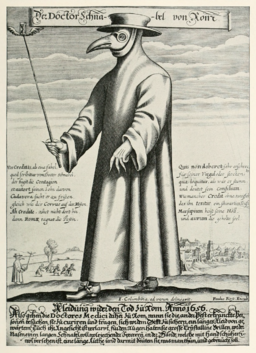 Last year around this time, we were biting our collective nails about Ebola―this year, it’s the Zika virus. One pandemic seems to ebb and we breathe a sigh of relief; then, like an epidemiological version of whack-a-mole, another one pops up. Next year, we may face yet another new plague-or more likely, a newer version of an old plague (in case you didn’t know, the Zika virus was actually isolated in 1947.)
Last year around this time, we were biting our collective nails about Ebola―this year, it’s the Zika virus. One pandemic seems to ebb and we breathe a sigh of relief; then, like an epidemiological version of whack-a-mole, another one pops up. Next year, we may face yet another new plague-or more likely, a newer version of an old plague (in case you didn’t know, the Zika virus was actually isolated in 1947.)
The scientific aspect of macabre microbes and their stealth-like behaviors fascinate me, but their impact on our communal psyches and on our societal behaviors are even more compelling. I immediately thought of the book “Blindness.”
Imagine sitting at your desk, driving a car, doing the dishes, changing a diaper, having sex, performing brain surgery….and suddenly, inexplicably, being struck blind. Imagine that scene repeating over and over across a city. Then imagine the mass hysteria that inevitably begins, rising to a fevered pitch. “Blindness” does that, but not in a usual sci-fi style of writing. Instead, this work, authored by a Nobel Prize for Literature winner, the late José Saramago, reads more like Dante’s poetry than any hot zone adventure.
The novel’s characters are identified and referenced by their trade or what they were doing when their sight disappeared, replaced by a white blindness: a man driving a car, a doctor and his wife, a boy, a thief, a prostitute, even a dog. The blind are quickly rounded up and quarantined in an abandoned mental hospital yet a sole witness exists to anarchy that soon reigns.
I don’t know what my moral fortitude would be under those circumstances, but “Blindness” begs me to imagine how I would behave in the midst of the bedlam. It is a hauntingly beautiful book, among those that I would take with me into a long period of solitary confinement. (Check out more of that theme in “Books that Sustain Us” in the Curious Cats Read premier January 2014 blog post.)
 In another book that explores the chaos of contagion, the bubonic plague is the backdrop for “Year of Wonders” written by Pulitzer Prize winner Geraldine Brooks. This historical fiction is based upon the true story of Eyam, a Derbyshire English village, whose residents chose to sequester themselves rather than letting the plague spread to outsiders.
In another book that explores the chaos of contagion, the bubonic plague is the backdrop for “Year of Wonders” written by Pulitzer Prize winner Geraldine Brooks. This historical fiction is based upon the true story of Eyam, a Derbyshire English village, whose residents chose to sequester themselves rather than letting the plague spread to outsiders.
Along with incorporating known facts of the plague’s outbreak and of Eyam’s residents, the narrative captures how hobgoblins of fear, bred by superstition and bigotry, are as contagious as any contagion, especially in times of crises.
The vehicle of these stories may be pestilence but their landscape is the humanity and inhumanity that ensues when the pillars crumble, the fires rage, and panic prevails.
The question for each of us is this:
Do we rise above the fray? Or fall beneath it?